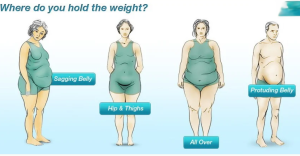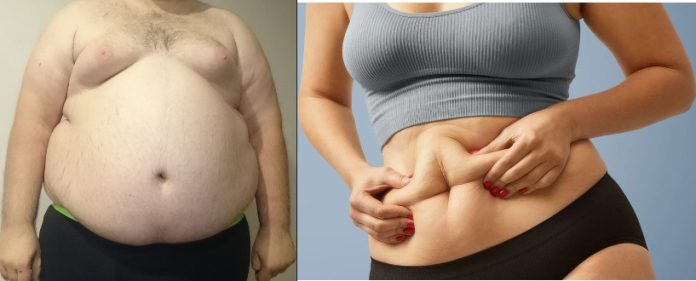One stubborn area of the body that many people wish could yield to weight loss efforts is our midsections.
Belly fat tends to accumulate more as we age (especially for women) and apart from being a nuisance, experts say it can have a big impact on our health.
What are the different types of belly fat —and what you can do to get rid of any excess?

Subcutaneous fat
A majority of fat (90%) is subcutaneous fat, which is the layer of fat closest to the skin. Since it’s stored right under your skin, you can easily get a sense of how much subcutaneous fat you have by pinching the area, Dr. Judith Korner, professor of medicine and director of the metabolic and weight control center at Columbia University Vagelos College of Physicians and Surgeons, says.
excessive fat above a BMI of 30 constitutes obesity and is a risk factor for cardiometabolic diseases, including type 2 diabetes, hypertension and some forms of cancer
But that subcutaneous fat isn’t all bad, and in fact can play an important role in overall health.
“You need fat for energy,” Korner explains. “Subcutaneous fat is important to protect the bones and internal organs, provide insulation and even produce some beneficial proteins.”
Linda Van Horn, a professor of preventive medicine and chief of the nutrition division at Northwestern University Feinberg School of Medicine, says, however, that while subcutaneous fat acts as a protective layer, excessive fat above a body mass index (BMI) of 30 constitutes obesity and is considered a risk factor for cardiometabolic diseases, including type 2 diabetes, hypertension and some forms of cancer.

Visceral fat
Visceral fat makes up just 10% of total fat and is harder to detect. “You can’t feel visceral fat,” Korner explains. “It is stored deep inside your abdomen and surrounds organs such as your liver and intestine.”
But don’t let the small percentage fool you. Too much visceral fat can have a major impact on your health, including a greater risk of developing diabetes, heart disease, stroke, liver disease and certain cancers.
Van Horn says visceral fat is also comprised of biologically active cells and cytokines, or proteins, that can contribute to inflammation and other harmful effects on your health.
visceral fat is also comprised of biologically active cells and cytokines, or proteins, that can contribute to inflammation and other harmful effects on your health
How to tell if you have a healthy amount of belly fat
It’s easier to see and feel how much subcutaneous belly fat you have, but assessing visceral fat can be trickier.
 Korner says that certain body types tend to have higher visceral fat. “A body that is apple-shaped may indicate more visceral fat, compared with a body that is pear-shaped,” she says.
Korner says that certain body types tend to have higher visceral fat. “A body that is apple-shaped may indicate more visceral fat, compared with a body that is pear-shaped,” she says.
One easy way to gauge if you have a healthy amount of belly fat is by measuring waist circumference, which is generally considered 35 inches or less for most women and 40 inches or less for most men. However, Korner says that these numbers may not be an accurate assessment for everyone, and you should also take other metrics into account, such as blood pressure, which can increase even with small gains in belly fat.
What can you do?
You can’t target fat loss from a specific area like your midsection, and even abdominal exercises alone won’t help you get rid of belly fat. Instead, focusing on overall weight loss and healthy habits can help you stay holistically fit while reducing belly fat.
focusing on overall weight loss and healthy habits can help you stay holistically fit while reducing belly fat
Make healthy eating choices. Limit your intake of sugar and foods high in saturated or trans fats, such as fried foods, processed meats and baked goods. Especially try to cut out sugary drinks such as sodas, which have been linked to an increased risk of visceral fat.
Be physically active. Combine aerobic exercise with some strength training. Korner recommends activities such as walking, running or cycling, as well as resistance exercises using weights or doing pushups.
Get plenty of rest. Research shows that not getting enough sleep can contribute to an increase in visceral fat, so make sure you’re getting at least 7 hours every night.


